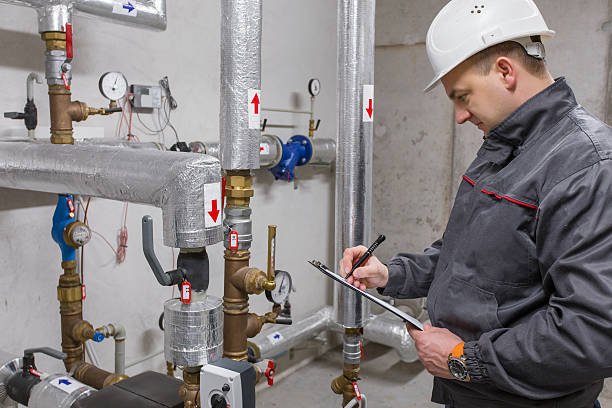Water damage is one of the most unexpected and stressful issues a homeowner can face. Whether it’s from a burst pipe, flooding, or even a slow leak that goes unnoticed, water damage can cause significant harm to a property in a short amount of time. The impact extends beyond just visible water; it can weaken structural elements, damage personal belongings, and even lead to health risks like mold growth. That’s why knowing how to handle water damage and when to call professionals is essential for every homeowner. Here’s what you need to know about water damage restoration and why it’s important to work with experienced Water Damage Professionals.
1. The Immediate Effects of Water Damage
When water enters your home, it begins causing damage immediately. Soft materials like carpets, furniture, and fabric absorb water quickly, becoming saturated and difficult to dry. Flooring and walls can also begin to swell or warp when exposed to moisture for too long.
The biggest problem homeowners face is that water doesn’t just affect what you can see. It can seep into hard-to-reach areas like the insulation, behind walls, and under flooring. This hidden moisture can lead to much bigger issues down the road if it’s not properly removed. That’s why the initial hours after water damage occurs are critical. The faster you can act, the better chance you have of minimizing the damage.
2. Assessing the Damage
One of the first things that water damage professionals will do is assess the extent of the damage. They can identify what’s salvageable and what may need to be replaced. This assessment is important for two reasons: it helps homeowners understand the scope of the damage and it’s often necessary for filing insurance claims.
Professional restoration teams use moisture meters and infrared cameras to detect moisture in places you can’t see. Even when the surface seems dry, these tools help identify hidden moisture that can lead to long-term damage or mold growth. This thorough inspection ensures that no water is left behind, reducing the risk of future problems.
3. Water Removal and Drying
The next step in water damage restoration is water removal. Whether it’s inches of standing water or just wet floors, all moisture needs to be removed to prevent further damage. For standing water, industrial pumps and vacuums are typically used to clear the area as quickly as possible.
Once the bulk of the water is gone, the drying process begins. High-powered fans, dehumidifiers, and ventilation systems are used to remove moisture from the air and dry out walls, floors, and furniture. This drying process is just as important as water removal, since any leftover moisture can lead to mold growth, which can start within 24 to 48 hours.
Professionals use specialized equipment to monitor the drying process, ensuring that moisture levels return to normal throughout the entire affected area. Without this careful attention to detail, hidden moisture could lead to further issues even months later.

4. Cleaning and Sanitizing
Water damage isn’t just about drying out the house; cleaning and sanitizing the affected areas is just as important. Depending on the source of the water (whether it’s clean, gray, or black water), there could be harmful contaminants present. For instance, sewage backups or floodwater can bring bacteria, viruses, and other harmful microorganisms into your home.
Professional cleaning products and disinfectants are used to thoroughly clean any surfaces that came into contact with the water. This step is critical for ensuring that the home is safe for you and your family to return to, and it helps eliminate any lingering odors from the water damage. Many Water Damage Professionals also offer deodorization services to help restore the home’s indoor air quality after water damage.
5. Mold Prevention and Remediation
One of the most dangerous after-effects of water damage is mold growth. Mold thrives in moist environments and can spread quickly throughout a home if left unchecked. It can grow on a variety of surfaces, including wood, drywall, carpets, and fabrics. Once mold starts growing, it can cause not only damage to your home but also significant health problems, especially for those with allergies or respiratory issues.
During the restoration process, professionals take specific steps to prevent mold growth. This includes monitoring moisture levels, applying antimicrobial treatments, and in some cases, removing mold if it’s already started to develop. Experienced teams like Fine Restoration are trained to handle mold remediation safely, ensuring that your home is thoroughly treated and safe to live in.
6. Restoration and Repair
Once the home is dry, clean, and mold-free, the final step is restoring the house to its pre-damage condition. This can involve anything from replacing damaged drywall and flooring to more extensive reconstruction work, depending on the severity of the water damage.
Reputable restoration companies like Fine Restoration will guide homeowners through the entire process, helping them understand what repairs are needed and working to get the home back to normal as quickly as possible. They also work with insurance companies to help homeowners manage claims, so they’re not left to deal with the financial burden of repairs on their own.
Conclusion
Water damage can be a homeowner’s worst nightmare, but with the right approach, the damage can be minimized, and the home can be restored. The key is acting quickly and involving professionals who know how to handle water damage properly. Water Damage Professionals offer the experience, equipment, and knowledge to tackle all kinds of water damage situations, from minor leaks to major floods.
For homeowners in the Kansas City area, Fine Restoration is a trusted name in water damage restoration. Their expert team responds quickly, provides thorough assessments, and ensures every step of the restoration process is handled with care and precision. When water damage strikes, knowing you have experienced professionals on your side can make all the difference.



